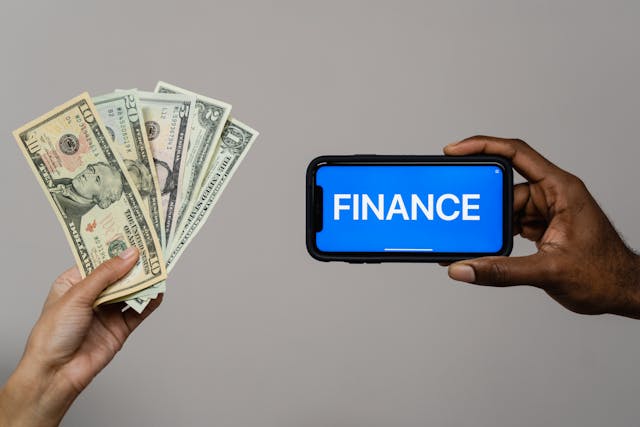Write Us: hello@ali5.org
From Side Hustle to Full Income: The Blueprint for Financial Escape
Ready to ditch the 9-5? Discover the exact steps to grow your side hustle into a full-time income and finally take control of your financial future.

Let’s get something clear: working a 9-to-5 isn’t a sin. For some, it offers structure, stability, and a path they’re happy to walk. But for many others, the daily grind feels more like a cage than a choice. If you’ve ever sat in your cubicle thinking, “There has to be more than this,” you’re not alone, and you’re not wrong.
The idea of turning a side hustle into your full-time income isn’t just about ditching the office. It’s about building a life with more autonomy, control, and fulfillment. But getting there? That takes more than just good intentions and late-night Googling.
Here’s a blueprint that actually works, no fluff, no hype, just a real strategy to take your side gig full-time and finally break free.
Step 1: Choose a Hustle That’s Scalable and Profitable
Not all side hustles are created equal. Some are great for pocket money, but terrible for scale. Walking dogs or selling handmade crafts might bring in cash, but there’s a ceiling. If you want real financial freedom, your hustle needs two things:
-
Scalability: Can you serve more people without working more hours?
-
Profit Margin: Are you keeping enough of what you earn?
Digital products, coaching, freelance services, consulting, and e-commerce check both boxes. Think content creation, copywriting, web design, online courses, or selling niche products. The more you can automate or replicate without trading time for money, the better.
Pro Tip: Validate your idea early. Don’t build a website, logo, or funnel before confirming people actually want what you’re selling.
Step 2: Get Brutally Honest About Your Finances
Freedom costs money. If you want to leave your job, you need to know your freedom number, the monthly amount you need to cover all essential expenses (housing, food, healthcare, debt, etc.). Add a buffer for emergencies and business growth.
Let’s say your expenses are $1,800/month. Your side hustle needs to consistently bring in at least that much after taxes and expenses before you can even think about quitting.
Track every dollar. Use tools like Mint, YNAB, or a simple spreadsheet. Know where your money leaks, what can be cut, and how much you truly need to feel secure, not just survive.
Step 3: Master the Skill of Consistency
Most side hustles fail not because the idea sucks, but because people treat it like a hobby. If you want full-time results, you need full-time commitment, even while still working a 9-to-5.
This means:
-
Showing up every day, even when you’re tired.
-
Creating systems that run even when you’re offline.
-
Prioritizing long-term payoff over short-term comfort.
Consistency beats creativity. It beats motivation. It beats talent. If you can outlast the early grind, you’ll already be ahead of most.
Step 4: Build in Public and Grow an Audience
People buy from people they trust. And trust takes time. So don’t hide your hustle in the shadows. Start showing your journey online. Share what you’re learning, building, failing at. Document the process.
This builds:
-
Credibility – You become someone worth watching.
-
Community – People start rooting for you (and buying from you).
-
Momentum – You’ll stay accountable when others are watching.
Use platforms like Instagram, X (Twitter), LinkedIn, or TikTok, depending on your niche. Don’t chase viral trends, chase connection. Your future income will depend on your ability to make people care.
Step 5: Systematize and Delegate Early
Here’s the truth: you’ll burn out if you try to do everything forever. Once your side hustle starts generating some revenue, reinvest in tools and people.
-
Use automation software (email responders, invoicing tools, schedulers).
-
Hire freelancers to handle tasks like editing, design, or admin work.
-
Document processes so you can step back without chaos.
This isn’t about being lazy. It’s about buying back your time and growing with intention. The faster you can step into a CEO role (instead of a one-person army), the faster you reach sustainable income.
Step 6: Set a Clear “Escape Date” and Prepare to Leap
There’s never a perfect time to quit your job, but there’s a right framework to know when you’re ready.
✅ Your side hustle covers your freedom number for 3–6 months straight
✅ You’ve built a 3–6 month emergency fund
✅ You have systems in place for client acquisition, fulfillment, and cash flow
✅ You’re mentally ready for uncertainty and pressure
Once those are locked in, mark a date. Circle it on the calendar. And make it real. Giving yourself a deadline adds urgency and gives your dream a finish line to run toward.
Step 7: Transition With Strategy, Not Panic
When the time comes to quit your job, don’t just say “peace out” on a random Tuesday. Create a transition plan:
-
Notify your employer respectfully (don’t burn bridges, you might need referrals).
-
Lock in your health insurance options (especially in countries like the U.S.).
-
Keep your expenses lean for the first few months after the switch.
-
Stay focused on growth, not just maintenance.
Freedom isn’t just quitting, it’s staying out of the 9-to-5 trap. So treat your new business like the real job it is, with even more discipline and intention.
Final Thoughts: Your Life, Your Rules
Making a full-time income from a side hustle isn’t reserved for “lucky” people or overnight success stories. It’s for anyone willing to trade comfort for clarity, excuses for execution.
You don’t need to go viral. You don’t need 10,000 followers. You need a clear offer, real consistency, and the courage to keep going when it’s hard.
The road to financial escape isn’t a shortcut. But it’s a path worth walking. And once you’re out, once you’re on your own terms, you’ll wonder why you didn’t start sooner.







